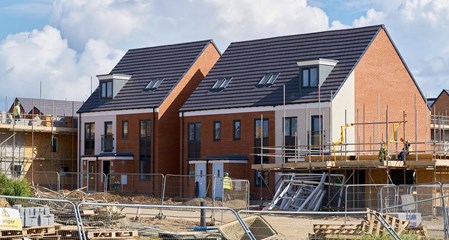Harry Steele is the RTPI’s Infrastructure Specialist
 On Monday 11th of May, The Department for Levelling Up, Housing and Communities (DLUHC) published the Levelling-up and Regeneration Bill. Within the bill, the government confirmed plans to replace Section 106 of the Planning Act 1990 with a new Infrastructure Levy (IL), which will be collected by local authorities. DLUHC have confirmed that there will be an official consultation on the IL in the coming months. The legislation builds upon the framework of the Community Infrastructure Levy (CIL) which came into force in September 2019 with the “powers required to operate IL […] substantially similar to those that exist for CIL”.
On Monday 11th of May, The Department for Levelling Up, Housing and Communities (DLUHC) published the Levelling-up and Regeneration Bill. Within the bill, the government confirmed plans to replace Section 106 of the Planning Act 1990 with a new Infrastructure Levy (IL), which will be collected by local authorities. DLUHC have confirmed that there will be an official consultation on the IL in the coming months. The legislation builds upon the framework of the Community Infrastructure Levy (CIL) which came into force in September 2019 with the “powers required to operate IL […] substantially similar to those that exist for CIL”.
The legislation confirms that the new levy will be charged on the value of property when it is sold and applied above a minimum threshold, with levy rates and minimum thresholds being set by local authorities. The rates must be set as a percentage of gross development value rather than the current CIL, which is based on floorspace. Rates should also take into account the economic viability of development within an area.
Before approving a charging schedule a charging authority must appoint a person (“the examiner”) to examine a draft. The examiners recommendations will then be put forwards and included in the final charging schedule.
Rates can also be different within a local authority. For example, different rates could be set for brownfield and greenfield sites within a local authority boundary to help incentivize development in certain areas.
This method of calculating rates will allow developers to price the value of contributions into the value of land. It will also remove the need for obligations to be renegotiated if the gross development value is lower than expected, while allowing local authorities to share in the uplift if gross development values are higher than anticipated. While the bill provides the framework for the new levy, the government has said that much of the detail will be set out in future regulations.
There are concerns from the housing sector over whether the proposed IL would be able to deliver the same level of affordable housing as Section 106 has been able to. A framework has been included in the bill to ensure the level of affordable housing currently gained through developer contributions will be the same or higher under the new levy and has that vowed these concerns will be fully addressed through regulations accompanying the new bill, which will be produced following consultation.
Further regulation will also consider how the levy will be applied to register provider-led schemes and will detail a “retained role” for Section 106 agreements to support the delivery of infrastructure on the largest sites.
In our response to the Planning white paper (2020) we outlined a number of concerns with the proposal for the Infrastructure Levy. The RTPI’s concerns over the need for different rates of the Levy across the country have been addressed and allow the proposal to support the Levelling Up agenda. The concern around how infrastructure would be then funded in areas of low development value however remains unanswered and will be a key point of discussion in our consultation response. The RTPI’s initial worries around the wider role of S106 also have been addressed through its proposed retention for larger sites.


